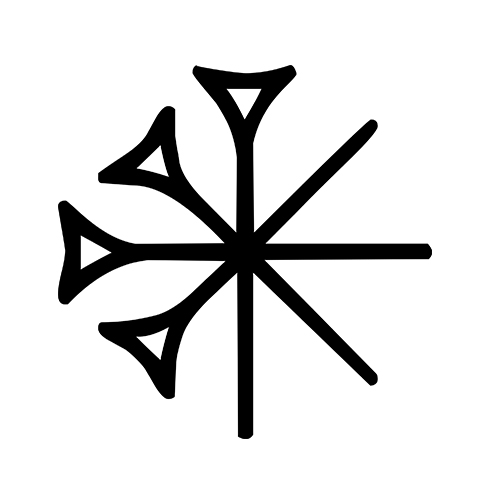About this deity
Ninlil (Sumerian: 𒀭𒊩𒌆𒆤) was a second generation Sumerian deity who is said to be the wife of Enlil. She was associated with being an air goddess.
MediumPrint sketchOrientationFrontImage date2011CreatorPaul BedsonSource notes"Drawing of Enlil and Ninlil taken from a mural decoration of Susa. Lord Enlil (with hooves and horns of the Bull God) and the Lady Ninlil. Second half of the 2nd millenium BC, Louvre, Paris. Baked bricks, height 54 inches."
MediumMolded brickMaterialTerracottaOrientationFrontImage datePost-1949Source notes"Bull-man protecting a palmtree, female(?) deity (partially destroyed, reconstructed), panel of molded bricks. Terracotta, middle 12th century BC. Found at the Tell of the Apadana in Susa. The inscription running along the central band record that Shilhak-Inshushinak made a statue of brick for the exterior chapel of Inshushinak." Current location: Department of Oriental Antiquities, Sully, ground floor, room 10; Accession number: Sb 14390 & Sb 14391; Credit line: Excavated by Roland de Mecquenem, 1913–1921.
Also known as
NinlilSud (disputed)𒀭𒊩𒌆𒆤 (Sumerian cuneiform)μυλιττα (Greek)μολις (Greek)mlš (transliterated Old Aramaic)Mulliltu (transliterated Akkadian)Mullissu (transliterated Akkadian)Mylitta (transliterated Akkadian)"Lady of the wind""Lady of the open field""Air goddess"
Parent belief system
Sumerian religion refers to spiritual beliefs practiced from ca. 4500-1900 BCE in Mesopotamia, or modern-day southern Iraq. Many deities were diffused into other Mesopotamian cultures.
Top myths
According to Jeremy Black, Ninlil may have been represented by a lion.








